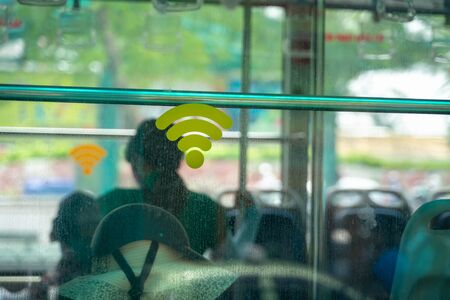Introduction to Wireless Connectivity in Infotainment
In recent years, wireless connectivity has fundamentally transformed the way we interact with infotainment systems in our vehicles. No longer limited by tangled cords or restrictive ports, drivers and passengers now expect seamless integration between their devices and a car’s onboard technology. This shift is largely driven by the widespread adoption of technologies like Bluetooth and Wi-Fi, which not only make it easier to connect smartphones and other gadgets but also enhance convenience and safety on the road. As infotainment systems have evolved, so too have user expectations—demanding faster connections, intuitive controls, and greater personalization. This growing reliance on wireless solutions has also influenced car design, paving the way for cleaner interiors and innovative features that cater to a tech-savvy generation of drivers. The rise of wireless technology in infotainment isn’t just about cutting cables; it’s reshaping the entire driving experience, making our daily commutes smarter, safer, and more enjoyable than ever before.
2. Bluetooth: The Foundation of Seamless Pairing
Bluetooth technology has become synonymous with wireless convenience in American vehicles, forming the backbone of modern infotainment systems. Its widespread adoption can be traced back to the growing need for drivers and passengers to stay connected while on the road without sacrificing safety or comfort. In the United States, where hands-free laws are increasingly strict, Bluetooth’s role in facilitating safe, hands-free calling is invaluable. This technology allows users to make and receive calls through their vehicle’s audio system, ensuring that both hands remain on the wheel and eyes on the road.
Beyond phone calls, Bluetooth enables seamless audio streaming from smartphones and other portable devices directly to a car’s speakers. Passengers can easily switch between playlists, podcasts, and navigation apps without cumbersome wires or complicated setup processes. The intuitive pairing process—often requiring just a few taps on a touchscreen—has contributed to Bluetooth’s reputation as an essential feature in American cars from compact sedans to full-size SUVs.
Device compatibility is another area where Bluetooth shines. Whether you have an iPhone, Android device, or even a classic MP3 player with Bluetooth support, most infotainment systems provide broad compatibility. As seen in the table below, core functionalities enabled by Bluetooth continue to drive its popularity:
| Bluetooth Feature | Benefits for Drivers |
|---|---|
| Hands-Free Calling | Complies with state laws; safer driving experience |
| Audio Streaming | Wire-free music and podcast access |
| Device Pairing | Simple connection process for multiple devices |
| Voice Control Integration | Easier interaction with phone functions via virtual assistants |
Overall, Bluetooth’s integration into infotainment systems reflects a broader shift toward connectivity and convenience in American automotive culture. As car manufacturers continue to innovate, Bluetooth remains a foundational technology that sets the stage for more advanced wireless features on the horizon.
![]()
3. Wi-Fi Integration: Expanding Entertainment and Productivity
Wi-Fi has become a game-changer in the evolution of in-car infotainment systems across the United States, transforming vehicles into connected hubs that rival the comforts of home and the functionality of an office. By leveraging Wi-Fi technology, modern vehicles offer passengers seamless internet access, which is especially valuable for families on road trips or commuters who need to stay connected on the go. With built-in Wi-Fi hotspots, passengers can stream movies, play online games, or connect multiple devices simultaneously without worrying about excessive data usage on their phones.
Beyond entertainment, Wi-Fi integration enables access to a wide range of streaming services directly through the vehicle’s infotainment interface. Whether it’s catching up on Netflix shows during a charging stop or listening to curated Spotify playlists while driving, drivers and passengers can enjoy personalized content without interruption. This level of convenience aligns perfectly with American preferences for flexibility and choice in media consumption.
Wi-Fi connectivity also plays a crucial role in keeping vehicles up-to-date and secure. Over-the-air (OTA) firmware updates delivered via Wi-Fi allow automakers to push new features, performance enhancements, and critical security patches without requiring a visit to the dealership. This not only improves user experience but also helps maintain vehicle safety standards over time.
Looking further ahead, Wi-Fi is laying the foundation for advanced vehicle-to-infrastructure (V2I) communication. Through this capability, cars can exchange data with traffic signals, toll booths, and other elements of smart city infrastructure. This opens the door to real-time traffic management, automatic payment processing, improved navigation accuracy, and enhanced safety alerts—features that are becoming increasingly important as American cities invest in intelligent transportation systems.
As Wi-Fi technology continues to advance and coverage expands across highways and urban centers in the US, its integration within infotainment systems will remain essential for both entertainment and productivity on the road. The result is a more connected, responsive, and enjoyable driving experience tailored to the digital lifestyles of today’s drivers and passengers.
4. Beyond Bluetooth and Wi-Fi: Emerging Wireless Technologies
As the demand for smarter, more integrated infotainment systems grows, automakers are looking beyond traditional Bluetooth and Wi-Fi to introduce cutting-edge wireless technologies that can deliver faster speeds, greater reliability, and enhanced security. Let’s take a closer look at some of the most promising innovations: Ultra-Wideband (UWB), 5G connectivity, and Near Field Communication (NFC).
Ultra-Wideband (UWB): Precision and Security
UWB is quickly gaining traction in automotive infotainment due to its ability to provide highly accurate location tracking and secure data transmission. With UWB, vehicles can offer features like digital key access—enabling your phone or wearable to unlock your car with pinpoint accuracy—and even enable seamless handoff between devices within the car’s ecosystem. The ultra-short pulses used by UWB also make it less susceptible to interference, which is crucial for busy urban environments.
5G Connectivity: Speed and Low Latency
The rollout of 5G networks across the United States is paving the way for a new era in connected vehicles. 5G brings lightning-fast download speeds and ultra-low latency, allowing infotainment systems to stream high-definition content, enable real-time navigation updates, and support cloud-based voice assistants without lag. It also enhances vehicle-to-everything (V2X) communication, making future cars safer and more responsive to road conditions.
Near Field Communication (NFC): Effortless Pairing and Payments
NFC technology is already familiar to American consumers thanks to tap-to-pay services at retail stores. In automotive infotainment, NFC allows drivers and passengers to pair smartphones with the vehicle’s system simply by tapping their device against a designated spot—making setup effortless. NFC also supports contactless payments directly from the dashboard, letting users pay for gas or tolls without leaving their seat.
Comparison Table: Next-Gen Wireless Technologies
| Technology | Main Benefit | Key Use Cases |
|---|---|---|
| UWB | High precision & security | Digital keys, in-car device localization |
| 5G | High speed & low latency | Streaming, cloud services, V2X communication |
| NFC | Simplicity & convenience | Device pairing, in-car payments |
The Road Ahead for Infotainment Connectivity
The integration of UWB, 5G, and NFC into infotainment systems marks a significant leap forward in how Americans interact with their vehicles. These technologies promise not only smoother entertainment experiences but also greater safety, convenience, and personalization on the road. As adoption grows, we can expect even more innovative features to emerge—making our daily drives smarter than ever before.
5. Security and Privacy Concerns in Connected Vehicles
Wireless connectivity in infotainment systems brings undeniable convenience, but it also introduces significant security and privacy concerns for vehicle owners. As cars become increasingly connected through Bluetooth, Wi-Fi, and other wireless technologies, they are exposed to a broader range of cyber threats that were once limited to computers and smartphones. One major risk is the possibility of data breaches. When infotainment systems sync with mobile devices, they may store sensitive information such as contact lists, call logs, and even location history. If these systems are not properly secured, hackers could exploit vulnerabilities to access this personal data.
Data Breaches and Hacking Risks
The integration of wireless features opens up multiple entry points for hackers. Through unsecured Bluetooth or Wi-Fi connections, attackers can potentially intercept communications between the vehicle and external devices. There have been documented cases where hackers remotely accessed car controls or stole private data by exploiting weaknesses in wireless protocols. The implications go beyond privacy invasion; a compromised system could impact driver safety if critical functions are manipulated.
Protecting Personal Information
Automakers are taking steps to enhance cybersecurity in connected vehicles by implementing encryption, regularly updating software, and limiting the amount of personal information stored on infotainment systems. However, consumers also play a crucial role by following best practices: regularly updating their car’s firmware, using strong passwords for Wi-Fi hotspots, and being mindful of what devices they connect.
The Future of Secure Connectivity
As wireless connectivity continues to evolve with advancements like 5G and new IoT standards, both manufacturers and drivers must remain vigilant. Building trust in connected vehicles requires ongoing collaboration between tech companies, automakers, and regulatory bodies to set security standards that protect users’ privacy without sacrificing the benefits of seamless connectivity.
6. Future Trends and Consumer Expectations
As we look ahead, the future of wireless connectivity in infotainment systems is poised to transform the American driving experience. With technology evolving at a rapid pace, drivers and passengers alike are expecting seamless integration between their personal devices and vehicle systems. The demand for interoperability—where smartphones, tablets, wearables, and even smart home devices can communicate effortlessly with car infotainment—is reshaping how automakers design their platforms.
Evolving User Behaviors
American consumers are increasingly accustomed to instant access, intuitive interfaces, and personalized content. As such, infotainment systems will need to anticipate user needs through smarter voice assistants, AI-powered recommendations, and adaptive user profiles. Streaming services, real-time navigation updates, and hands-free controls are set to become baseline expectations rather than luxury features.
Interoperability: Breaking Down Barriers
One of the biggest trends on the horizon is universal compatibility. Industry leaders are working toward open standards that allow Apple CarPlay, Android Auto, and proprietary OEM solutions to work interchangeably across brands and device ecosystems. This means an iPhone or Android device could connect with any vehicle’s infotainment system without additional setup—making road trips and daily commutes smoother for everyone.
Toward a Fully Connected American Drive
The pursuit of a fully connected car extends beyond entertainment. Future wireless technologies like 5G and vehicle-to-everything (V2X) communication will enable cars to interact not just with devices inside the cabin but also with roadside infrastructure, other vehicles, and cloud-based services. This connectivity promises enhanced safety features, predictive maintenance alerts, and new opportunities for personalization—ensuring that the American driving experience remains at the forefront of innovation and convenience.


